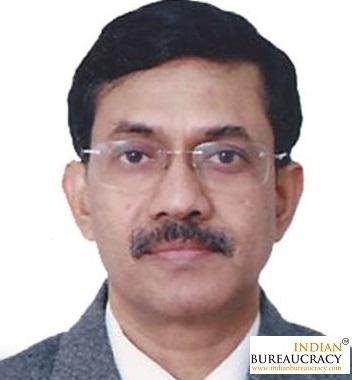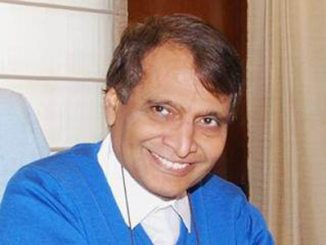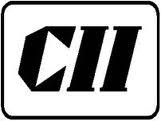
The Chairman Railway Board Shri A. K. Mital inaugurated the National Technical Seminar & Technical Exhibition organized by the Institution of Permanent Way Engineers (India) (IPWE). The topics for deliberation during the Seminar were as under : –
1. Design Construction & Maintenance of Station Yards,
2. Accelerated construction of New Lines/Doubling Project
3. Fast Track Construction of ROBs/RUBs.
Along with Chairman, Railway Board, Member Engineering Railway Board Shri V.K. Gupta, Member Staff, Shri Pradeep Kumar, GM Northern Railway Shri A. K. Puthia, other Board Members and senior officials from Railway Board were also be present on the occasion.
The Seminar was inaugurated by Shri A. K. Mital. During his inaugural speech, he stated that the important role which is being played by Permanent Way Engineers of the Railways in their day-to-day Railway working for modernization of Railways and ensuring safety of train operations is highly commendable.
He further stated that the first and the foremost requirement of a station design is to provide for smooth and efficient flow of traffic and this can be done only by meticulous planning of origin and direction of the traffic. Trade-offs in terms of efficiency and flexibility is also to be carefully considered.
He said that apart from abolishing un-manned crossings, construction of ROB/RUB is necessary both from safety and operation point of view and the main roadblocks for slow pace of construction need to be identified and addressed.
Member Engineer, Railway Board Shri V. K. Gupta also addressed the Seminar following is the key note address of Member Engineering Railway Board Shri V.K. Gupta : –
“It is indeed a privilege and honour to be present in this “National technical seminar” organised by the Institution of Permanent Way Engineers (India) on the subjects of:
• Design, Construction & Maintenance of Station Yards,
• Accelerated construction of New Lines/Doubling Projects and
• Fast Track Construction of ROBs/RUBs.
At the outset, I must congratulate the IPWE for selecting the subjects for this seminar, which are not only topical but also reflect the priority of the Government for rapid expansion of Railway network.
The vast permanent way network spread across length and breadth of the country is Railways’ most extensively and intensively used asset. The Engineers of Indian Railways are entrusted with the daunting challenge of maintenance and expansion of this vital asset.
As you all are aware, the web enabled ‘Track management system’ has been developed as an IT platform to manage all track maintenance related activities. It is my pleasure to announce that ‘Track Management System’ has been fully implemented on all Divisions of IR and has recently been inaugurated by Hon’ble MR. With its implementation, it will be possible to plan the maintenance activities on real time basis, which is a pre-requisite for high speed and heavy haul regime. In the days ahead, additional modules like Inventory management module, Bridge water level monitoring module, Rail temperature monitoring modules will also be added to the TMS. It is incumbent upon us to ensure that correct data is fed and maintained into this system to derive full benefits. With implementation of TMS, Inspection registers shall be discontinued in next six months period.
In line with the vision of the Government, Indian Railways’ current focus is on fast track commissioning of capacity enhancement projects. On the 24 congested corridors identified to be augmented, 77 Projects of doubling/ 3rd Line/ 4th Line have been included in this year’s budget, which would add around 9000 track kilometers at an anticipated cost of Rs 90,000 crores.
During 2015-16, we have kept an ambitious target of commissioning 2500 km of additional Broad gauge track comprising of 500 km New Lines, 800 km of Gauge Conversion and 1200 km of Doubling. I am glad to inform you that our Engineers and agencies have responded extremely well to this call and we are poised to not only achieve these targets, but to surpass them. However, this has put a greater responsibility on us as we have set still higher targets of commissioning 14500 km network in the next four years. I am sure that with the dedication of all the stake holders, we will achieve this feat.
Most of these network expansion works also involve substantial re-modelling of existing station yards, and therefore it is also essential for us to gear up towards faster execution of these works as well.
The vision of IR is to eventually eliminate all unmanned level crossings and busy manned level crossings in a phased manner. Budgetary sanctions for construction of about 1400 ROBs and 7500 RUBs are already available, having Railway’s share of approx. Rs.31,000 crore. Significantly large number of ROBs/RUBs are likely to get sanctioned in coming years. Every year about 1000 RUBs/ROBs are proposed to be constructed. Therefore, expeditious execution of ROB/RUB works with minimum disturbance to traffic is a necessity.
Thus, this seminar is quite relevant towards achieving the vision of Indian Railways for faster and better execution of capacity enhancement works to meet the challenges of growing traffic.
Design, Construction and maintenance of Station Yards:
The station yards are the main activity centres of any railway network. It is a matter of common observation that a train approaching a major station yard, slows down considerably on various accounts such as stoppage at signals, cross movements, non-availability of platform berth etc., thereby limiting the sectional capacity. The speed of approaching trains can be enhanced considerably by removing constraints and bottlenecks of yard. The right approach is to properly design the yards initially with due consideration for future demand, functionality and efficiency.
The design of Station yard is a multi-functional activity. The operational requirement is vital inputs, based on which layout design is done. The site constraints, required clearances as per Schedule of Dimensions and other relevant factors must be carefully considered while designing yard layouts, so as to avoid requirement of any condonation at later date. Drainage is a major factor for easy upkeep of yards in long run. So planning of adequate drainage arrangement in design stage itself is very essential.
Before commencing the construction and remodelling of yards, it is imperative that detailed survey and setting out of layout is done precisely, failing which may lead to permanent constraints and defects in yards. With Indian Railway’s planning to increase the speed up to 160-200 kmph on selected routes, far more planning and efforts are required to increase speed in station yards.
Towards this objective, over-riding switches are gradually being replaced with Thick web switches for improved reliability, maintainability and riding comfort. Indian Railway has also developed weldable CMS crossing so that LWR can be continued through turnouts. Presently, turnouts on Indian Railways are laid without cant, which results in rough running and knocking on turnouts causing maintenance problems at higher speeds. To get over this problem, it is proposed to adopt canted Turnouts, which will improve riding and reduce the maintenance requirements further.
Considerable amount of running time can be saved if speed on turn-outs and loop lines is increased from present 30 kmph to 50 kmph. Strengthening of turn in curves and loops and improvement in signalling system will be prerequisite for this. The guidelines in this regard are under consideration and will be issued soon. This will not only improve speed but will also reduce the maintenance effort significantly.
Ballastless track/ washable apron is required on all platform lines, for improving drainage, track geometry, maintainability and speeds. Field trials of number of designs of Ballastless track are being envisaged so that the best suited design for IR can be used.
Based on studies in some world Railways, it has been found that use of Under Sleeper Pads (USP) fixed at bottom of sleeper and Under Ballast Mat (UBM) laid between ballast and sub-grade may help in achieving reduction in ballast thickness to an extent of about 100mm. It is being planned to invite a “Global Expression of Interest” to explore such measures to seek reduction in the requirement of ballast considerably.
Further, the formation design including the requirement of blanket layer has been reviewed recently, and the same has been rationalised with substantial reduction in thickness of blanket layer. This will not only reduce cost of construction but will also reduce the project completion time.
Accelerated construction of New lines/ Doubling Projects:
This is a watershed year for Indian Railways, as for the first time, the Ministry of Railways has decided to undertake capacity enhancement works to decongest the network through Extra Budgetary Resources. A MoU for taking a loan of Rs 1,50,000 crore from LIC has been signed and first tranche of Rs 2000 crore has already been taken. Out of the ongoing Projects, 50 highly remunerative Doubling/ 3rd Line Projects have been shortlisted for funding through EBRIF. The other critical Capacity Enhancement Projects will continue to be funded through Gross Budgetary Support provided by the Ministry of Finance.
To enable construction of 14500 Km. tracks in next four years, a paradigm shift from “Business as usual” approach will be required. Therefore the need for accelerated construction of New lines/Doubling projects cannot be over emphasized. New methodologies and new mechanisms need to be put in place for fast tracking of various processes. With certain measures already taken, this is perhaps the first time that we could award contracts for some of the Doubling Projects within 9-10 months of their inclusion in the Budget.
Apart from expeditious delivery, we need to ensure global quality standards in project execution. The maintainability of assets is largely dependent upon the initial quality of construction. For achieving this, Mechanization of track laying activities is absolutely essential. Adequate compaction of formation and ballast layers, high quality concreting, mechanized track linking and machine tamping are essential, to achieve high quality standards.
DFCCIL has already adopted the mechanized track linking by using large machineries, such as NTC (New Track Construction machine). A number of simple machines are also available for handling/spreading, levelling and rolling of ballast layers, handling/spreading of PSC sleepers, rail threaders, welding etc., which should be used for initial laying of track. Though the initial cost might be slightly higher in such cases, the overall life cycle cost of the assets would be substantially lower. Lesser disruptions to traffic would be an additional advantage. Thus, there is a need to switch over to mechanization of the track construction by incorporating suitable conditions in the tender documents and Method Statements of construction.
Fast Track construction of ROBs/RUBs:
The elimination of level crossings is necessary to enhance safety, increase speeds and to increase line capacity. With huge number of sanctioned works of ROBs/RUBs, there is a strong need for adopting innovative methods for ensuring faster construction with minimal impact on running traffic, besides being cost effective. Many improvements have been made towards this effort. Such as,
• Standard drawings for super-structures with Composite Girders and Bow-String Girders have been developed, thus saving lot of time in design.
• Railway is now adopting mostly open foundation instead of pile foundation resulting in saving in cost and time.
• Railway has also developed GAD for construction of ROB and RUB over the same level crossing, which is especially suitable for urban areas, where construction of RUB is necessary along with ROB.
• To maximise the utilisation of traffic blocks, placement of pre-cast box for 2 to 3 RUBs on electrified lines in a single traffic block has been successfully done in Northern Railway.
• To expedite the construction of ROBs/RUBs on National Highway Corridors, Railway has signed a MOU with Ministry of Road Transport and Highways and launched a website for speedy approval of GAD of ROBs/RUBs to be constructed by MORTH/NHAI. This website is working satisfactory and Railway has decided to extend this facility to State Govt. and Other Statutory Organisation for ROBs/RUBs being constructed on cost sharing basis and deposit work.
In the end, I once again complement IPWE for organising this Seminar on very topical and important subjects and I hope that innovative, cost effective and implementable ideas shall emerge out of the Seminar. “
IndianBureaucracy.com wishes the event its very best.







Leave a Reply
You must be logged in to post a comment.